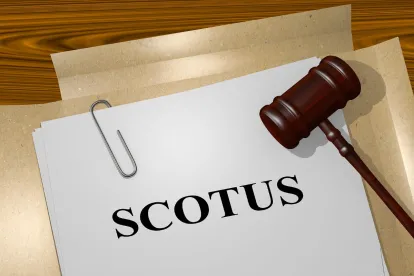With 2022 underway, set forth below are the major labor and employment policy issues that the Buzz is keeping an eye on as we begin a new (midterm election) year.
COVID-19 Vaccine Requirements.
Today the Supreme Court of the United States heard oral argument on whether the Occupational Safety and Health Administration’s (OSHA) COVID-19 vaccine emergency temporary standard (ETS) and the Centers for Medicare and Medicaid Services’ (CMS) vaccine mandate for healthcare workers should be stayed pending judicial review. Because this legal issue (and the virus itself) are moving quickly, a decision is expected soon. Here is the current state of play while we wait for a ruling by the Supreme Court.
OSHA
As a result of a ruling by the Sixth Circuit Court of Appeals lifting a stay of the ETS, OSHA will enforce the ETS as follows:
-
January 10, 2022, is the deadline by which employers with 100 or more employees must develop and implement COVID-19 vaccine policies, as well as comply with the other ETS provisions that do not directly involve vaccines and testing.
-
February 9, 2022, is the date by which OSHA will enforce the vaccination and testing requirements of the ETS.
CMS
Subject to various legal challenges and accompanying twists and turns, the CMS rule remains in effect in California, Colorado, Connecticut, Delaware, Florida, Hawaii, Illinois, Maine, Maryland, Massachusetts, Michigan, Minnesota, Nevada, New Jersey, New Mexico, New York, North Carolina, Oregon, Pennsylvania, Rhode Island, Tennessee, Vermont, Virginia, Washington, and Wisconsin. The rule is also no longer enjoined in the District of Columbia.
Federal Contractor Vaccine Mandate.
Legal challenges to Executive Order 14042 and its implementing guidance are not part of today’s Supreme Court hearing. Several federal courts have enjoined the mandate, and these orders vary in their scope of applicability. The most sweeping order was issued by the U.S. District Court for the Southern District of Georgia, which has enjoined the mandate nationwide.
Congress: Legislating in an Election Year
The U.S. Senate returned to a snowy Washington, D.C., this week while the U.S. House of Representatives remained out on its district work period. While the November midterm elections may seem a long way off, they will arrive sooner than one might think, and will play a significant role in the 2022 legislative debates in the U.S. Congress. As the elections approach, it will become increasingly difficult for leaders of both parties to encourage their members to take tough votes. This means that there will be a rush to move legislation during the first half of the year. The Buzz is monitoring the following issues:
Build Back Better Act
Months of intraparty negotiations among Democrats appear to have resulted in little progress in advancing this priority legislative vehicle, which may temporarily move to the side burner (not necessarily the back burner) as Democrats retrain their focus on voting rights and election reform. Remember that the Build Back Better Act includes federal paid leave and new and additional civil penalties for labor and employment violations.
COVID-19 Relief
The sudden rise of the Omicron variant raises the issue of whether there may be a need for additional federal pandemic relief, especially targeted assistance for the hospitality industry. However, it does not appear that Congress will have any appetite for this for the time being. But never say never: if the last two years have taught us anything, it is to expect the unexpected.
Nominations
Presidential nominees who were not confirmed in the first session of the 117th Congress must be resubmitted by the president. The Buzz will be watching to see what will happen with David Weil, who was nominated to lead the U.S. Department of Labor’s (DOL) Wage and Hour Division, but received political pushback in the U.S. Senate Committee on Health, Education, Labor, and Pensions (HELP). Weil’s nomination has been resubmitted, but he is likely to face the same opposition.
Protecting the Right to Organize (PRO) Act. As the Buzz has been writing for months, the major labor overhaul bill and top priority of the AFL-CIO is unlikely to move as long as the legislative filibuster holds in the U.S. Senate.
Pregnant Workers Fairness Act. The workplace accommodation bill (H.R. 1065) for pregnant workers is on the precipice of becoming law. Bipartisan votes in the House and in the Senate HELP Committee indicate that the bill may have enough votes to overcome a legislative filibuster.
Task Force on Union Organizing.
By the end of October 2021, the Task Force on Worker Organizing and Empowerment was to have delivered to President Biden its report on ways the executive branch could increase union organizing. As of this writing, the report has not been made public, and a White House spokesperson this week did not have a response when asked by a reporter when the report would be released. The report—whether released publicly or not—is expected to provide a road map for 2022 regulatory action intended to increase union membership rolls. Actions could potentially include federal contractor blacklisting or union neutrality requirements.
Department of Labor
The DOL spent much of 2021 reversing Trump-era policies, including regulations relating to independent contractors, joint employment, and tipped employees. Expect the DOL to continue its aggressive regulatory agenda in 2022. For example, we know from the Fall 2021 Unified Agenda of Regulatory and Deregulatory Actions that the Wage and Hour Division expects to propose changes to the Fair Labor Standards Act’s overtime regulations. In addition, at any time now, OSHA is expected to propose a restoration of its Obama-era injury and illness reporting requirements. And in the first few months of this year, the Office of Federal Contract Compliance Programs (OFCCP) may propose amending its investigation and pre-enforcement conciliation processes and requiring contractors to notify OFCCP when they enter into subcontractor arrangements so that the agency might conduct compliance investigations of covered subcontractors.
As always, personnel will continue to be an issue to watch at DOL in 2022. Will President Biden be able to fill vacancies at the top of the Wage and Hour Division, Employee Benefits Security Administration, Employment and Training Administration, and Mine Safety and Health Administration? Getting these vacancies filled will be critical to advancing each subagency’s enforcement and regulatory agendas. Finally, we will be watching the status of Secretary of Labor Marty Walsh, who is rumored to be interested in running for governor of Massachusetts in 2022.
National Labor Relations Board
The National Labor Relations Board has had a Democratic majority since about September 2021 and a Biden-appointed general counsel since July 22, 2021. As a result, toward the end of 2021, we began to see major actions taking shape with regard to significant policy changes at the Board. For 2022, the Board has already teed up the following issues:
Fractured Bargaining Units
The Board is currently accepting amicus briefs on the issue of a return to the bargaining unit determination standard as set forth in the 2011 Specialty Healthcare and Rehabilitation Center of Mobile case. Ultimately, the Board is expected to return to this standard, which requires the demonstration of an “overwhelming community of interest” to include excluded employees into a petitioned-for bargaining unit.
Joint Employer
According to the Fall 2021 Unified Agenda of Regulatory and Deregulatory Actions, the Board expects in the coming weeks to “engage in rulemaking on the standard for determining whether two employers, as defined in Section 2(2) of the National Labor Relations Act (Act), are a joint employer under the Act.” The Board is expected to amend or rescind the current “direct and immediate” standard and replace it with a broader and potentially nebulous standard.
Independent Contractor
The Board is in the process of reviewing public input on whether it should revise its test for independent contractor status. Dissenting Board members predict that the end result will be a new test that deemphasizes the significance of entrepreneurial opportunity and inappropriately relies on an “economic dependency” standard.
Consequential Damages on the Way
January 10, 2022, is the deadline by which stakeholders must submit briefs on whether remedies for unlawful terminations should include consequential damages, such as payment of health care expenses or loan defaults.
Equal Employment Opportunity Commission.
Due to the statutory terms of its commissioners, the U.S. Equal Employment Opportunity Commission (EEOC) maintained a Republican majority throughout 2021, despite the change of administrations. That majority will last until July 1, 2022, when Commissioner Janet Dhillon’s term will expire. Look for President Biden to have a nominee ready to fill the vacancy as soon as it becomes available. Once Democrats are in the majority, expect the Commission to focus on stalled workplace harassment guidance, EEO-1 wage and hour data reporting, and the redelegation of litigation authority to the general counsel’s office—a practice that many members of the business community believed led to inconsistent and unaccountable enforcement practices. The Buzz would not be surprised if President Biden also put forth a general counsel nominee, as the general counsel position has been vacant since the president removed Sharon Fast Gustafson on March 5, 2021.
D.C.’s Challenging Commutes.
The aforementioned snow and ice storm that hit the Washington, D.C., area this week knocked out power and snarled commutes. Our legislators were not immune from the mess, as Senator Tim Kaine (D-VA) spent almost 27 straight hours commuting in his car from his home in Richmond to Capitol Hill—a drive that is usually about two hours. The incident shined a light on the private lives of our politicians, particularly how they commute to and from Washington, D.C. Some legislators, like Kaine, live close enough to drive. Others have support staff to ensure that they can catch last-minute flights leaving from local D.C. airports. As a U.S. Senator, President Biden famously logged more than 8,000 train rides commuting from the District to his home in Delaware. Even President Lincoln, while residing at his cottage at the Soldiers’ Home during warmer months, commuted about 30 minutes on horseback to the office (i.e., the White House).




 />i
/>i

